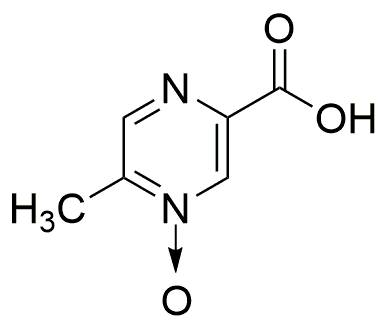Acipimox is widely utilized in research focused on:
- Cholesterol Management: Used in clinical settings to help lower cholesterol levels, particularly in patients with hyperlipidemia, offering an alternative to traditional statins.
- Diabetes Research: Investigated for its potential benefits in improving insulin sensitivity, making it a valuable compound in diabetes studies.
- Cardiovascular Health: Explored for its role in reducing cardiovascular risks associated with high lipid levels, contributing to heart health initiatives.
- Pharmaceutical Development: Serves as a reference compound in the development of new lipid-lowering agents, aiding researchers in creating more effective medications.
- Clinical Trials: Frequently used in trials to assess its efficacy and safety, providing critical data for healthcare professionals and researchers.
General Information
Properties
Safety and Regulations
Applications
Acipimox is widely utilized in research focused on:
- Cholesterol Management: Used in clinical settings to help lower cholesterol levels, particularly in patients with hyperlipidemia, offering an alternative to traditional statins.
- Diabetes Research: Investigated for its potential benefits in improving insulin sensitivity, making it a valuable compound in diabetes studies.
- Cardiovascular Health: Explored for its role in reducing cardiovascular risks associated with high lipid levels, contributing to heart health initiatives.
- Pharmaceutical Development: Serves as a reference compound in the development of new lipid-lowering agents, aiding researchers in creating more effective medications.
- Clinical Trials: Frequently used in trials to assess its efficacy and safety, providing critical data for healthcare professionals and researchers.
Documents
Safety Data Sheets (SDS)
The SDS provides comprehensive safety information on handling, storage, and disposal of the product.
Product Specification (PS)
The PS provides a comprehensive breakdown of the product’s properties, including chemical composition, physical state, purity, and storage requirements. It also details acceptable quality ranges and the product's intended applications.
Certificates of Analysis (COA)
Search for Certificates of Analysis (COA) by entering the products Lot Number. Lot and Batch Numbers can be found on a product’s label following the words ‘Lot’ or ‘Batch’.
Número de catálogo
Número de lote/lote
Certificates Of Origin (COO)
This COO confirms the country where the product was manufactured, and also details the materials and components used in it and whether it is derived from natural, synthetic, or other specific sources. This certificate may be required for customs, trade, and regulatory compliance.
Número de catálogo
Número de lote/lote
Safety Data Sheets (SDS)
The SDS provides comprehensive safety information on handling, storage, and disposal of the product.
DownloadProduct Specification (PS)
The PS provides a comprehensive breakdown of the product’s properties, including chemical composition, physical state, purity, and storage requirements. It also details acceptable quality ranges and the product's intended applications.
DownloadCertificates of Analysis (COA)
Search for Certificates of Analysis (COA) by entering the products Lot Number. Lot and Batch Numbers can be found on a product’s label following the words ‘Lot’ or ‘Batch’.
Número de catálogo
Número de lote/lote
Certificates Of Origin (COO)
This COO confirms the country where the product was manufactured, and also details the materials and components used in it and whether it is derived from natural, synthetic, or other specific sources. This certificate may be required for customs, trade, and regulatory compliance.


